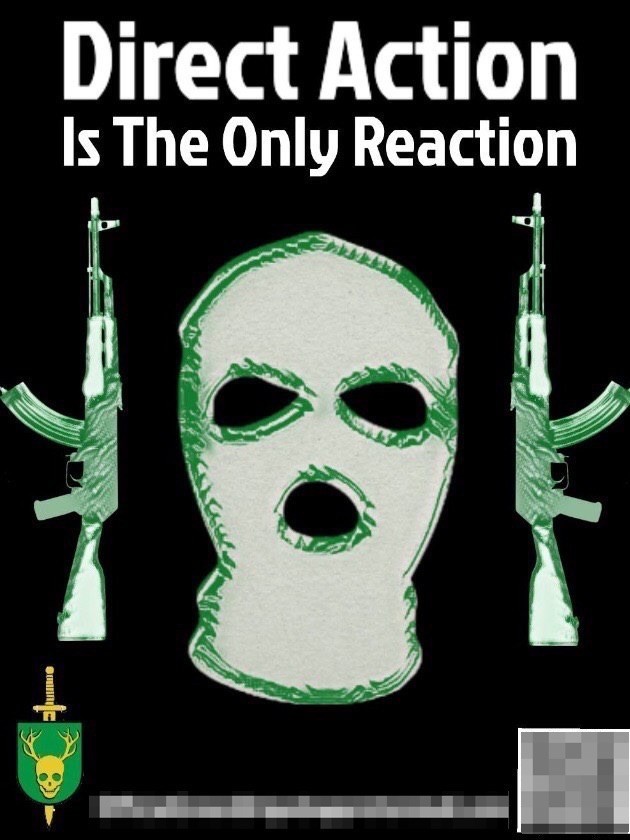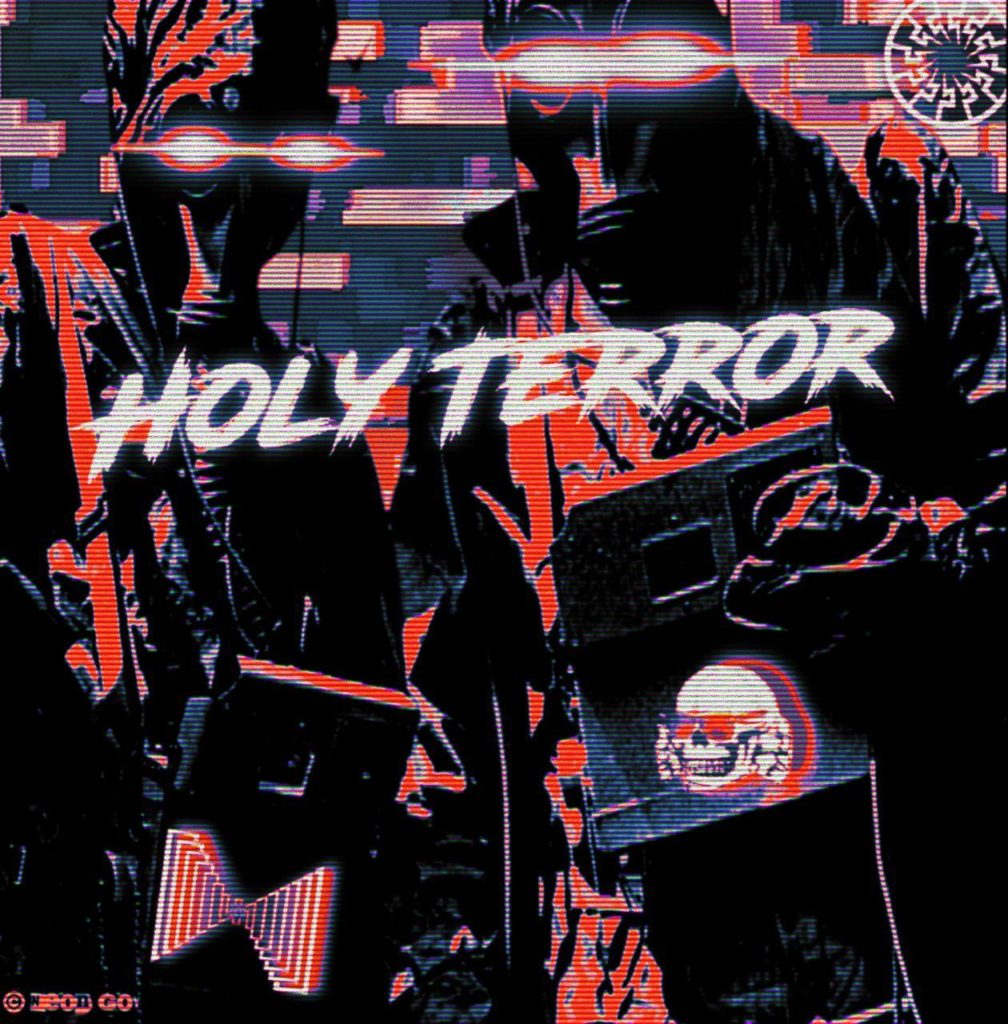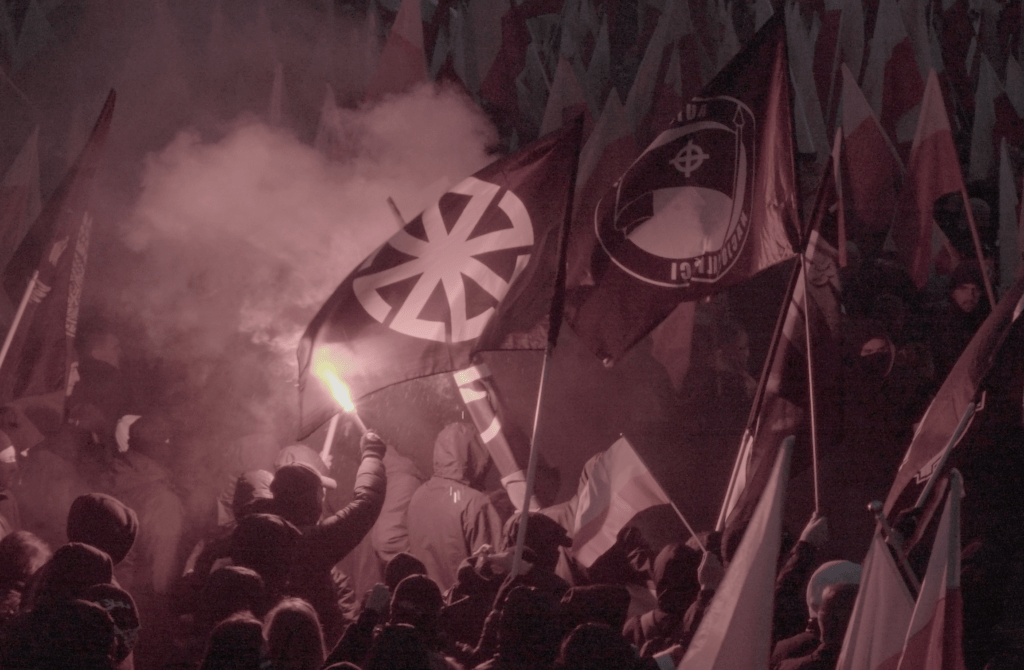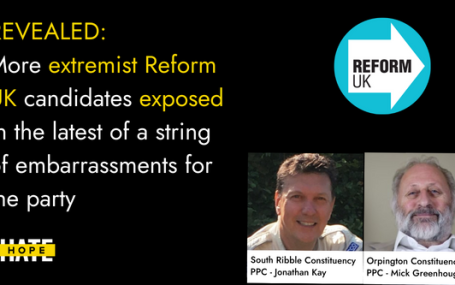HOPE not hate uses cookies to collect information and give you a more personalised experience on our site. You can find more information in our privacy policy. To agree to this, please click accept.
2020 got off to a tragic start with a mass shooting by a far-right terrorist in Hanau, Germany, taking the life of 10 people in…
2020 got off to a tragic start with a mass shooting by a far-right terrorist in Hanau, Germany, taking the life of 10 people in an attack on two shisha bars frequented mainly by people with an immigrant background. The attack encapsulated what would later become one of the key features of far-right activism in 2020, namely the way it was motivated in-part by conspiracy theory beliefs. However, it also appeared to be a continuation of the far-right terror trend from 2018 and 2019. It was the second deadly far-right terror attack in Germany in less than half-a-year, following the attack against a synagogue and kebab shop in Halle in October 2019. The Halle attack was inspired by the Christchurch mass shooting which claimed the lives of 51 people in two mosques in New Zealand in March 2019 which inspired a series of attacks in Europe and the US during the year.
The 2020 Global Terrorism Index published by the Institute of Economics & Peace highlights that we are experiencing a peak of far-right terrorism in the West with 49 registered attacks in 2019, an upwards going trend for five consecutive years. While complete data is not available for 2020 at
the time of writing, this trend does not appear to be sustained for this year. However, there remains a large and active terror advocating far-right community. There have been many terror related arrests and multiple new groups have been formed during the year, indicating that the threat of far-right terror should not be seen as diminished.
The multiple attacks and attempts in Germany, Norway and the UK directly inspired by Christchurch demonstrated the international mindset and decentralised structure of the current far-right threat. In a recent report by HOPE not hate, Joe Mulhall wrote about how we appeared to be shifting into an increasingly ‘post-organisational’ far-right landscape, where a “decentralised collective of anonymous people” were working in “broadly the same direction and towards similar goals”, making it more difficult to monitor and undermine their activities. This has been the case for some time online, but the attacks and terror related charges brought in 2019 and 2020 has underlined that this is also a feature of the most extreme parts of the far-right. Many attacks during this period had a distinct online dimension and aimed to encouraged others to commit similar acts of terrorism (albeit without strict direction from a leadership) and were committed by perpetrators whose familiarity with online spaces where far-right terrorism was encouraged.

From the publication of documents online to specific sites outlining the details and motivations ahead of their attacks and the use of live streamed video as well as the peppering of both with vocabulary common to these spaces, the intention in many cases (made explicit in documents released ahead of the attacks) where to further cultivate online pro- terror subcultures online and encourage others to carry out such acts.
The ensuing media coverage and virally replicated memes are also often part of the perpetrators plan to sow division and hatred. Therefore, it is important to understand that far-right terror doesn’t end when the last bullet has been fired but form a part of a larger wave designed to stoke up violence and sow fear in primarily minority communities. The tactic exploits existing organisations and terror promoting networks online to maximise the reach of the attack.
Part of this network has come to be termed ‘the terrorgram’ when specifically referring to channels on chat app Telegram, one of the most active platforms for far-right terror advocating groups today. It has over time grown a specific aesthetic and language that glorifies images of war and violence. Related groups can be found across other chat apps, Instagram and fascist forums. While few of the activists taking part in these will take action, the collective serve to instill the feeling that violence is both necessary and justified while at the same time allowing people to connect, share advice and motivate each other. Creating a network of individuals with similar ideas and aspirations but without direct leadership.
That online terror advocating groups are increasingly important to the terroristic far-right is made evident in a spate of terror related arrests and charges brought in 2020 against far-right activists, as well as exposures of specific terror advocating networks.
In January 2020 an Estonian nazi made headlines as the leader of Feuerkrieg Division (FKD). The group gained notoriety on the messaging app Telegram because of its extreme content and calls for terrorism by a leader who called himself “Commander”. Commander posted pictures of himself in what looked like combat gear, bragged about his extensive collection of far-right literature and urged other users to bomb federal buildings. FKD soon had members in several European countries and North America, the fact that most members had not met each other offline did not stop them from producing propaganda in the form of stickers, posters and digital content. Police also made arrests in Croatia and Lithuania related to the FKD.
This mode of organising also allows very young people to take a central role in the most extreme segments of the far-right as long as they can produce sufficiently extreme and interesting content and are articulate enough. Unknown to the group’s members, Commander was just 13 years old and two British members of 16 and 17 years old faced charges for terror related offenses in November 2020. Another 23 year-old member of the group was convicted in Germany in December. The United Kingdom also proscribed the FKD in July 2020, making association with the group illegal.

Worryingly, FKD is not an anomaly. Similar terror advocating groups have also been formed elsewhere, following the style of FKD with decentralised, mainly online organising. One was the so-called “Moonkrieg Division” run by a 16 year old Swedish boy although the group had members in the US and Eastern Europe.
Similarly, in the UK 2020 saw the emergence of “The British Hand” which was founded by a 15 year-old boy who said he was planning to attack asylum centres alongside his fellow group members. Another member from the group is currently facing charges for planning terrorism and manufacturing weapons through 3D printing.
Groups organising primarily offline are however still a feature of the terror scene in Europe. Several members of British National Action, which was proscribed in 2018, and its splinter groups were convicted during the year in the UK. Primarily offline groups like National Action, the Scandinavian Nordic Resistance Movement (NRM) and American AtomWaffen Division also provide a blueprint and inspiration for newer online groups. FKD for example made explicit references to AtomWaffen Division and its members engaged in the NRM’s public chats on Telegram.

Another trend in 2020 was the continued increase in activists using the label “eco-fascist”. The murderers in Christchurch as well as the one in El Paso, USA in March and August 2019 explained their activism in-part through concern for the environment. “Kill the invaders, kill the overpopulation and by doing so save the environment”, wrote the Christchurch shooter in his manifesto.
On 30 October 2019 two men burnt down a mink farm in the south of Sweden, with an eco-fascist nazi terror group called “The Green Bridgade” taking responsibility for the arson. The group, which is similar to aforementioned terror advocating groups on social media encourage violence as necessary and has close ties to mainly US based nazi terror group The Base but adds its focus on the environment. It had members in the UK and notably put up propaganda posters there as well. It disbanded in March 2020 but similar, though often short-lived, groups have appeared throughout 2020.
Alongside the attack in Hanau, in which conspiracy theory seemed to have formed part of the perpetrators motivations. Attacks by proponents of the QAnon conspiracy theory have also taken place in the US and Canada. In Germany, another conspiracy theory of a coming “Day X” where supposedly corrupt political leaders, migrants and Jews were to be killed has found support within the police and military. Multiple individuals have been arrested after acquiring material and assembling lists of targets. These show how trends in far-right terrorism clearly follow broader trends in the far-right and in society at large. Currently conspiracy theories plays an important role and eco-fascism fits well with the anti-globalism already found in the far-right.
As public concern with legitimate environmental issues continues to grow, the far-right has also sought to capitalise on this shift in awareness, with far-right populist parties such as France’s National Rally attempting to rebrand themselves with a green tinge. At the most extreme it has become combined with violence, strong veins of anti-humanism, racism cloaked in nature mysticism and notions of “natural order”. While the movement remains small, as the topic continues to be salient, it carries with it a potential for further violence.

To understand the threat of far-right violence, merely tracking attacks designated as acts of terrorism or terror related criminal charges is insufficient. This is especially true in international comparisons where legal frameworks differ. The form violence takes might also different depending on context.
Across Europe there are a range of organisations, events and individuals that are part of the most extreme part of the far right that views violence as justified or necessary. For these groups, almost all kinds of violence is seen as self-defence against some kind of outside invader or internal corrupt element. Simultaneously violence can also be glorified because it is seen as part of other ideals, such as that of a masculine warrior or fighter especially evident in far-right martial arts groups. While most actors in this milieu do not actually engage in what is commonly labelled terrorism, they do engage in in other forms of direct violence.
Examples of this include attacks and arson on refugee housing and street violence, including attacks on ideological opponents and minorities. While criminal, these actions often do not reach the threshold to be described legally as terrorism but still spread fear in affected communities . For example, in July a black NHS employee in Bristol, UK was hit deliberately by a car in what Police deemed a racially-aggravated attack because of the language used by the perpetrator. In far-right chat groups the victim was described as a gangster and criminal and the attack was quickly justified through the idea that black men in Britain sexually abused white women.
Other relatively common forms of violence with potential deadly outcome that are not identified as acts of terrorism are arson attacks against asylum centres and refugee accommodation. In 2015 and 2016, during the increase in migration because of the war in Syria, attacks were common on refugee centres. Finland is a particularly bad example with 40 arson attacks against refugee centres in 2015 and 2016.
In addition to new and online far-right terror networks we have also seen more traditional far- right organisations encouraged violence, implicitly and explicitly. Related to attacks against refugee centres it is notable how the Sweden Democrats in 2016 published lists marking out the location of them, similar to what took place in the UK in 2020 where lists of hotels housing migrants were spread on far-right social media channels and several were visited by the leader Paul Golding and activists from Britain First.
This is a useful reminder that while the internet has become a central space for extreme far-right networks to organise, there continues to be threat from more traditional offline networks and groups. These include concerts, martial arts tournaments and conferences that serve to connect activists, disseminate propaganda, recruit and radicalise for violence. Such events include the concert organised by the French branch of Blood and Honour named “Call of Terror” in February 2020 and the yearly nazi martial arts festival “Kampf der Nibelungen” in Germany.
These examples highlight how the far-right terror threat is complex and cannot be seen as completely distinct from adjacent parts of the far right. While it is only a small fraction of the movement that is willing to engage in outright terrorism, several parts of the movement serve to justify violence or serve to make the threshold to perpetrating violence smaller. These include clearly definable organisations with a leadership structure and name, offline events and meetups but also networks of chat rooms and live streams that all function differently but play a role in justifying violence.

HOPE not hate reveals two more extremist candidates from Reform UK, in the latest of a string of embarrassments for the party UPDATE: Just hours…